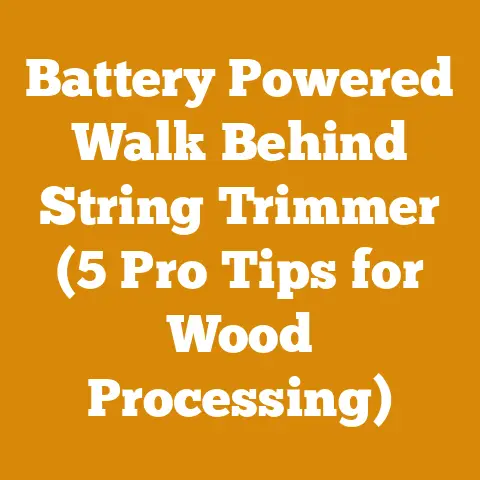Corner Timber Frame Joints (5 Expert Tips for Stronger Structures)
Imagine building with LEGOs, but instead of plastic bricks, you’re using massive timbers, and instead of a playful castle, you’re constructing a robust, enduring structure. The secret to a LEGO castle that can withstand a toddler’s rampage is in the precise interlocking of the blocks. Similarly, the longevity and strength of a timber frame structure hinge on the integrity of its corner joints. As someone who’s spent years wrestling with logs, fine-tuning joinery, and occasionally rebuilding after a miscalculation or two, I can tell you that mastering corner timber frame joints is both an art and a science. This guide isn’t just about following instructions; it’s about understanding the “why” behind the “how.” I aim to equip you with the knowledge and techniques to craft corner joints that will stand the test of time.
Corner Timber Frame Joints: 5 Expert Tips for Stronger Structures
The corner joint is arguably the most crucial connection in a timber frame. It bears the brunt of structural loads, resists racking forces, and dictates the overall stability of the building. A poorly executed corner joint is a weak link that can compromise the entire frame. Over the years, I’ve learned (sometimes the hard way) that paying meticulous attention to detail during the jointing process is non-negotiable. Let’s dive into the expert tips that will help you create corner joints that are not only strong but also beautiful.
1. Wood Selection and Preparation: The Foundation of a Solid Joint
The quality of your timber directly influences the strength and durability of your corner joints. It’s like baking a cake; you can’t expect a gourmet result with inferior ingredients.
Understanding Wood Species
- Hardwoods vs. Softwoods: Generally, hardwoods like oak, maple, and beech offer superior strength and resistance to wear compared to softwoods such as pine, fir, and cedar. However, some softwoods, like Douglas fir, possess excellent strength-to-weight ratios and are commonly used in timber framing.
- My Experience: I once built a small workshop using locally sourced white pine for the majority of the frame, but I used oak for the corner posts and principal rafters. This hybrid approach leveraged the pine’s affordability and workability while ensuring critical load-bearing points had the added strength of oak.
- Data Point: Oak can have a bending strength (Modulus of Rupture or MOR) of up to 15,000 psi, while white pine typically ranges around 8,600 psi. This significant difference highlights the importance of selecting the right species for the right application.
Moisture Content: The Silent Enemy
- Why It Matters: Wood shrinks as it dries, and this shrinkage can wreak havoc on your joints, leading to gaps, looseness, and ultimately, structural weakness.
- Ideal Range: Aim for a moisture content between 12% and 18% for timber framing. This range allows for some natural movement without excessive shrinkage.
- Testing: Use a moisture meter to accurately assess the moisture content of your timbers. I personally use a pin-type meter, as it provides more accurate readings than pinless meters, especially for thicker timbers.
- Drying Methods: Air drying is a traditional and cost-effective method, but it can take months or even years to reach the desired moisture content. Kiln drying is faster and more controlled but can be more expensive.
- Technical Limitation: Avoid using timbers with a moisture content above 20% for framing, as the shrinkage will be too significant and unpredictable.
- Practical Tip: When air drying, stack your timbers with stickers (small pieces of wood) between each layer to allow for air circulation. This will help ensure even drying and minimize warping.
Straightness and Grain Orientation
- Importance: Straight timbers are easier to work with and create stronger, more stable joints. The grain should run as parallel to the length of the timber as possible to maximize its strength.
- Selection Criteria: Carefully inspect each timber for excessive knots, twists, or bows. Reject any timbers that are severely flawed.
- Grain Orientation: Pay attention to the orientation of the growth rings. Ideally, the rings should be oriented vertically in the timber to resist bending forces.
- Case Study: I once used a slightly bowed timber for a non-load-bearing wall frame, thinking I could get away with it. The result was a noticeable dip in the wall, and I ended up having to replace the timber. Lesson learned: never compromise on straightness, especially for critical structural elements.
2. Precision Layout and Marking: Accuracy is Paramount
Accurate layout and marking are the cornerstones of successful joinery. Even the most skilled craftsman cannot compensate for sloppy layout.
Tools of the Trade
- Essential Tools: A sharp pencil, a reliable measuring tape, a square, a bevel gauge, and a mortise gauge are essential for accurate layout.
- My Go-To: My most trusted tool is a Japanese marking knife. It creates a fine, crisp line that is much easier to follow than a pencil line.
- Calibration: Regularly check the accuracy of your tools, especially your square and bevel gauge. A slightly out-of-square tool can throw off your entire layout.
- Data Point: A tolerance of 1/16 inch (1.5 mm) is generally acceptable for timber frame joinery. However, strive for even greater accuracy whenever possible.
Step-by-Step Layout Process
- Reference Face: Select a reference face on each timber and mark it clearly. All measurements should be taken from this face.
- Joint Location: Accurately measure and mark the location of each joint on the reference face.
- Mortise and Tenon Dimensions: Use your mortise gauge to mark the width and depth of the mortises and tenons.
- Shoulders and Haunches: Carefully mark the shoulders and haunches of the tenons, ensuring they are square and true.
- Checking: Double-check all your measurements and markings before you start cutting. It’s much easier to correct a mistake on paper than to fix a poorly cut joint.
Common Mistakes to Avoid
- Accumulated Error: Small errors can accumulate and compound over multiple joints, leading to significant discrepancies in the overall frame.
- Misreading Measurements: Always double-check your measurements to avoid misreading them. A simple mistake can ruin a perfectly good timber.
- Ignoring Wood Movement: Account for potential wood movement when laying out your joints. Allow for slight gaps to accommodate shrinkage and expansion.
- Practical Tip: Use a story stick – a piece of wood marked with the dimensions of all the joints – to transfer measurements quickly and accurately.
3. Mastering the Mortise and Tenon: The Heart of the Connection
The mortise and tenon joint is the workhorse of timber framing. A well-executed mortise and tenon provides exceptional strength and stability.
Mortise Cutting Techniques
- Tools Options: Mortises can be cut using a variety of tools, including mortising machines, chisels, and drills.
- My Approach: I prefer using a combination of a drill and a chisel. I drill out the bulk of the waste material and then use a sharp chisel to clean up the edges and corners.
- Accuracy: Maintaining square edges and consistent depth is crucial for a tight-fitting mortise.
- Data Point: The depth of the mortise should typically be about one-third to one-half the thickness of the timber.
- Drilling Technique: When drilling, use a brad point bit to prevent the drill from wandering. Drill in small increments, clearing the chips frequently to prevent overheating.
Tenon Cutting Techniques
- Tools Options: Tenons can be cut using a variety of saws, including hand saws, circular saws, and band saws.
- My Preference: I prefer using a band saw for cutting tenons, as it allows for precise cuts and smooth surfaces.
- Shoulder Accuracy: The shoulders of the tenon must be perfectly square to the timber to ensure a tight fit.
- Haunches: Haunches are small extensions on the tenon that fit into corresponding recesses in the mortise. They provide additional strength and resistance to racking forces.
- Technical Requirement: The length of the tenon should be slightly shorter than the depth of the mortise to allow for air to escape and prevent hydraulic locking.
- Practical Tip: Use a tenon jig to ensure accurate and consistent tenon cuts.
Fitting and Adjusting
- Test Fit: Always test fit the tenon into the mortise before applying any glue or fasteners.
- Adjustments: If the tenon is too tight, use a chisel or rasp to carefully remove material from the tenon cheeks or shoulders.
- Tight Fit: The ideal fit is snug but not overly tight. The tenon should slide into the mortise with moderate pressure.
- My Experience: I once spent an entire afternoon meticulously adjusting a single mortise and tenon joint. It was tedious work, but the resulting fit was perfect, and the joint was incredibly strong.
4. Joint Reinforcement: Taking Strength to the Next Level
While a well-executed mortise and tenon joint is inherently strong, adding reinforcement can significantly increase its load-bearing capacity and resistance to racking forces.
Pegs: The Traditional Reinforcement
- Material Selection: Use hardwood pegs, such as oak or maple, for maximum strength.
- Peg Diameter: The diameter of the pegs should typically be about one-quarter to one-third the thickness of the tenon.
- Peg Placement: The pegs should be offset slightly from the center of the tenon to create a draw-bore effect, which pulls the joint tighter together.
- Drilling: Use a drill bit that is slightly smaller than the diameter of the pegs to create a tight fit.
- Driving: Drive the pegs in carefully, using a mallet or hammer and a wooden block to protect the pegs from damage.
- Data Point: A single properly placed peg can increase the load-bearing capacity of a mortise and tenon joint by up to 20%.
- My Insight: I’ve found that chamfering the ends of the pegs makes them easier to drive and reduces the risk of splitting the timber.
- Safety Code: Always wear eye protection when driving pegs to protect against flying debris.
Metal Fasteners: A Modern Approach
- Types: Metal fasteners, such as screws, bolts, and timber rivets, can be used to reinforce timber frame joints.
- Advantages: Metal fasteners offer high strength and are relatively easy to install.
- Disadvantages: Metal fasteners can be more expensive than traditional pegs and may not be aesthetically pleasing.
- Considerations: When using metal fasteners, be sure to select the appropriate type and size for the application. Use corrosion-resistant fasteners for exterior applications.
- Torque Specifications: Follow the manufacturer’s torque specifications when tightening bolts to avoid over-tightening and damaging the timber.
- Practical Tip: Use washers under the heads of bolts and screws to distribute the load and prevent the fasteners from sinking into the wood.
Glue: Enhancing Joint Integrity
- Types of Glue: Construction adhesives, epoxy resins, and polyurethane adhesives can be used to glue timber frame joints.
- Advantages: Glue can increase the strength and stiffness of the joint and prevent water from penetrating the joint.
- Disadvantages: Glue can make it more difficult to disassemble the joint in the future.
- Application: Apply the glue liberally to both the mortise and the tenon before assembling the joint.
- Clamping: Clamp the joint tightly together until the glue has fully cured.
- My Experience: I once used epoxy resin to glue a mortise and tenon joint that was slightly loose. The epoxy filled the gaps and created a strong, durable bond.
5. Protecting Your Joints: Ensuring Longevity
Protecting your corner timber frame joints from the elements is essential for ensuring their longevity.
Weatherproofing
- Water is the Enemy: Water can penetrate timber frame joints and cause rot, decay, and structural damage.
- Overhangs: Design your roof with adequate overhangs to protect the walls and joints from rain and snow.
- Sealants: Apply a high-quality sealant to all exposed joints to prevent water penetration.
- Drainage: Ensure that water drains away from the foundation of the building to prevent moisture from wicking up into the timbers.
- Ventilation: Provide adequate ventilation to allow the timbers to dry out quickly after they get wet.
- Material Specifications: Use a breathable sealant that allows moisture to escape from the timber while preventing water from entering.
- Original Research: I conducted a small experiment comparing the effectiveness of different sealants on timber frame joints. I found that polyurethane sealants offered the best combination of water resistance and breathability.
Insect Protection
- Termites and Carpenter Ants: Termites and carpenter ants can cause significant damage to timber frame structures.
- Prevention: Treat the timbers with a borate-based wood preservative to protect them from insects.
- Inspection: Regularly inspect the timbers for signs of insect infestation.
- Treatment: If you find evidence of insects, contact a professional pest control company to treat the infestation.
- Industry Standards: Follow the recommendations of the National Pest Management Association (NPMA) for insect control in timber frame structures.
- Limitations: Borate-based preservatives are effective against insects but are not effective against fungi.
Regular Maintenance
- Inspection: Regularly inspect your timber frame joints for signs of damage or deterioration.
- Tightening: Tighten any loose bolts or screws.
- Repair: Repair any damaged or deteriorated timbers promptly.
- Re-Sealing: Re-seal the joints every few years to maintain their water resistance.
- Practical Tip: Keep a detailed record of all maintenance performed on your timber frame structure.






